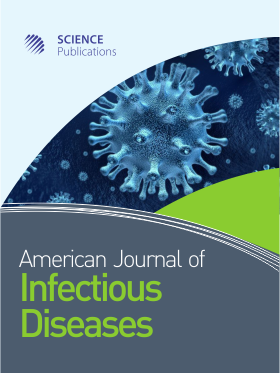Efficient Anaerobic Fermentation of Simple Sugars by Yeast Fuels Resistance Candida spp. Infections to Eradication by Drugs
- 1 Federal University of Technology, Nigeria
- 2 Nnamdi Azikiwe University, Nigeria
- 3 College of animal Health and Production, Nigeria
- 4 University of Jos Teaching Hospital, Nigeria
- 5 Veterinary Research Institute, Nigeria
Abstract
Problem statement: Human systemic Candida infections had proved difficult to eradicate by the medical health care system. Some practitioners and scholars see the problem as being due to drug resistance. For example an author wrote that ‘secondary drug resistance is clearly being encountered in one setting, oropharyngeal candidiasis in patients with advanced Human Immunodeficiency Virus type 1 (HIV-1) infection usually following years or months of azole therapy. Approach: This research work understudied the nutritional strategies of yeast colonies to serve as a guide to understanding the survival strategies of Candida colonies in human Candidiasis. The aim of the research was to make some impute into more effective ways of eradicating human Candida infections. Ethanol was produced biologically by fermentation of sugar by micro-organisms. The yeast Saccaromyces cerevisiae metabolises complex carbohydrates like starch in the absence of oxygen to ethanol, carbon dioxide and water. This study compared the average ethanol yield of hydrolyzed and unhydrolyzed gelatinized cassava starch fermented by Saccharomyces cerevisiae. The starch was hydrolyzed by α and β-amylase enzymes. Fermentation of the starch was done with a 1% innoculums of a 12 h culture of saccharomyces cerevisiae incubated for 48 h under anaerobic conditions. Results: The results of the study showed that there was no starch hydrolysis in the absence of α and β-amylase enzymes. Starch hydrolysis in the presence of α and β-amylase enzyme took 1 h. There was no starch fermentation in the absence of saccharomyces cerevisiae. The ethanol yield of starch which had been hydrolyzed by α and β-amylases prior to fermentation by saccharomyces cerevisae was 28 times higher than the ethanol yield of starch which had not been previously hydrolyzed by α and β-amylases. These results of the study suggest that yeast infections in human and animal tissues produce 28 times more ethanol yield from the glucose present in the host tissues (for tissue respiration) than they would produce from the fermentation of unhydrolyzed starch outside the body tissues of the host (like from undigested starchy food trapped in the mouth and throat by oropharyngeal Candida infections). Conclusion: The findings of the study enables us to conclude that this innate ability of yeast species to easily produce large yields of ethanol from anaerobic fermentation of simple sugars like glucose creates a competitive advantage which enhances their continuous survival in systemic human body tissues where glucose available for host tissue respiration is ever present. The efficient eradication of such yeast infections in human victims (and animals) should incorporate ways of diminishing the availability of excess hydrolyzed sugars in the host tissues (which the yeast colonies easily survive on). The escalating effect of stress (including oxidative stress) on Candidiasis lnfection proliferation should also be communicated to systemic Candidiasis patients.
DOI: https://doi.org/10.3844/ajidsp.2011.98.103

- 4,962 Views
- 3,495 Downloads
- 0 Citations
Download
Keywords
- Efficient eradication
- additional distilled
- gelatinized starch
- amylopectin content
- determined independently
- hundred milliliters
